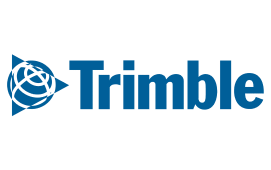Best Practices for Electrical Estimating
Your project budget depends on the accuracy of your estimates, and poor estimates can lead to costly mistakes. However, you can improve your estimating skills and contribute to your business's success by following certain best practices.
1. Learn from the Past
Your past data is a valuable tool when you are working on new projects. This method is called analogous estimating, where you look back on previous projects to develop more accurate forecasts for future work. It is a good idea to start doing so now if you do not already track your past jobs. You can create a detailed record of individual tasks and use this information to guide your future projects.
2. Prepare for the Unexpected
Unexpected obstacles are very common in construction. You should always prepare for unforeseen circumstances by including contingencies in your estimates. These contingencies will help you handle unexpected delays, equipment failures, and material shortages. This allows your project to stay on track.
3. Break Down Every Detail
A good estimate needs to be detailed and cover everything. Ensure that you break down the project into smaller tasks and assign timelines and resources to each one. You should include every detail, such as delivery schedules and who is responsible for different parts of the project. This level of detail ensures your estimates are accurate and helps you manage the project more effectively.
4. Double-Check Your Work
Even when you have taken the time to carefully create your estimate, a second look is always helpful. It is important to check that all tasks and deliverables are included in the estimate. You can avoid awkward situations with clients and prevent costly errors by carefully reviewing your estimate.
5. Use Technology
Electrical estimation software can transform the way you estimate by bringing together labor rates, material costs, and supplier information in one system. These tools allow you to create accurate estimates more quickly and improve your efficiency. You can save time and focus on the actual work instead of getting caught up in paperwork by adopting these tools.
Electrical estimation software like Accubid, EBM and ConEst can transform the way you estimate. It allows you to create accurate estimates faster and improving your efficiency and productivity. Connect with us to know more.
6. Organize Your Job Thoroughly
It is important to be well-organized before you start estimating. Study all the project documentation and plans carefully to make sure nothing is missed. You can try to spot potential problems early and address them before they affect the estimate when you are organized. Rushed estimates are often inaccurate, so take the time to get everything right from the start.
7. Improve Communication Skills
Estimating is not only about numbers, but it also involves good communication. Your effective communication with clients and contractors ensures that your estimates are accurate. Being friendly and approachable encourages others to provide helpful information that can improve your estimates. Good communication also helps you make a strong impression when presenting your bid.
Conclusion
Estimating is hard work, and sometimes it takes a lot of time. And it can even take more time if you do not have a system in place. Charter Estimating working with the latest electrical estimating software does all of this and more. This software is faster than those estimating manually with paper plans and Excel. It is often cheaper than printing plans and less prone to human error. Remember that accurately pricing a job or project can boost your profits, while incorrect pricing can be costly. Estimating software helps save time.
.jpg)
.jpg)





